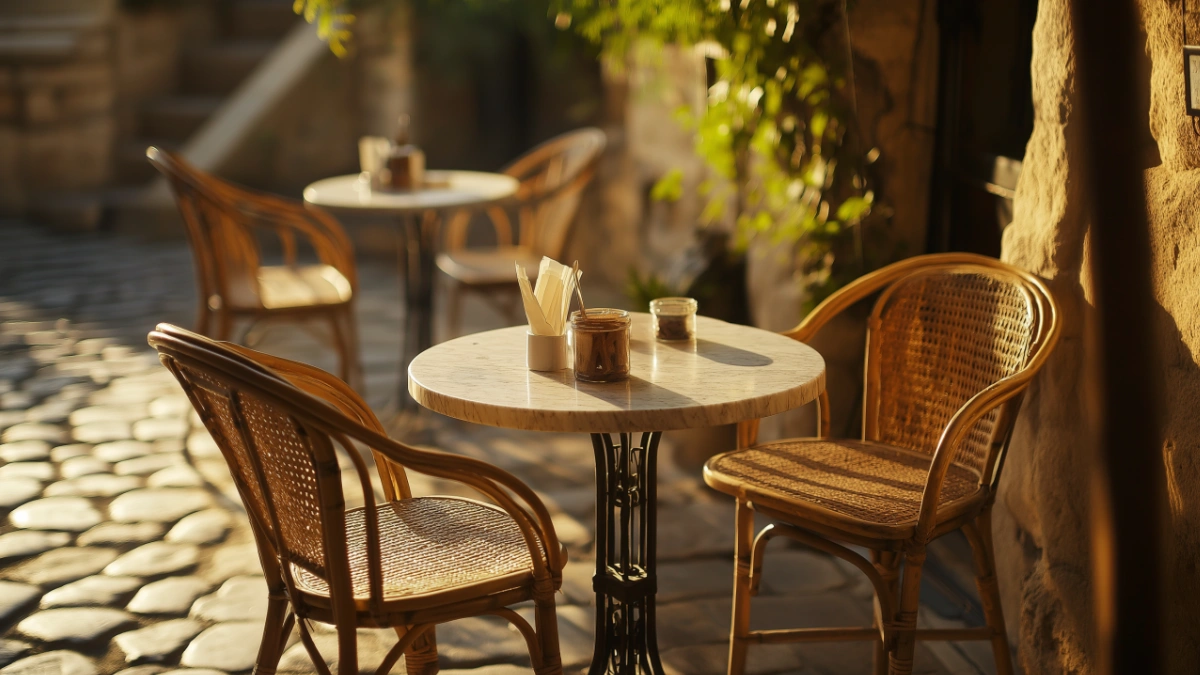Visual Journey Through Rome, Italy: Aesthetic Highlights for Travel and Home Inspiration
Table of Contents
Rome isn’t just a city—it’s an experience, a timeless blend of history, beauty, and vibrant street life that stirs the soul. From its ancient ruins and sun-drenched piazzas to artful facades and terracotta-toned alleyways, Rome is one of the world’s most aesthetic destinations, offering endless inspiration for travelers and design lovers alike.
In fact, recent Pinterest trends show a spike in searches for “Rome aesthetic,” “European street photography,” and “Italian lifestyle decor.” Whether you’re planning a trip to the Eternal City or looking to infuse your home with a European flair, Rome’s visual richness can serve as a guide.
This blog post invites you on a curated visual journey through Rome, Italy, spotlighting aesthetic moments from classical architecture to cozy cafés. We’ll explore how Rome’s design elements—its textures, tones, and timeless motifs—can influence your personal style, travel planning, and home decor decisions. Let’s uncover the beauty that makes Rome an endless source of creative inspiration.
In-Depth Outline:
1. Classical Architecture & Grand Design
- Iconic Roman landmarks and their timeless appeal
- Decorative elements to incorporate into interiors
- Design influence from the Pantheon to palazzos
Bullet Points:
- Arches, columns, and domes are central features.
- Roman symmetry and balance are echoed in modern design.
- Use of marble and stone creates a luxurious aesthetic.
- Detailed moldings and carvings inspire elegant interiors.
- Roman fountains and courtyards promote tranquil outdoor living.
Table: Architectural Influence on Modern Decor
| Roman Feature | Modern Home Application |
|---|---|
| Columns | Pillar-inspired bookshelves or furniture |
| Arched Windows | Curved mirrors, doorway arches |
| Travertine Marble | Bathroom or kitchen countertops |
| Courtyards | Garden patios with water features |
2. Roman Color Palettes: Earthy and Elegant
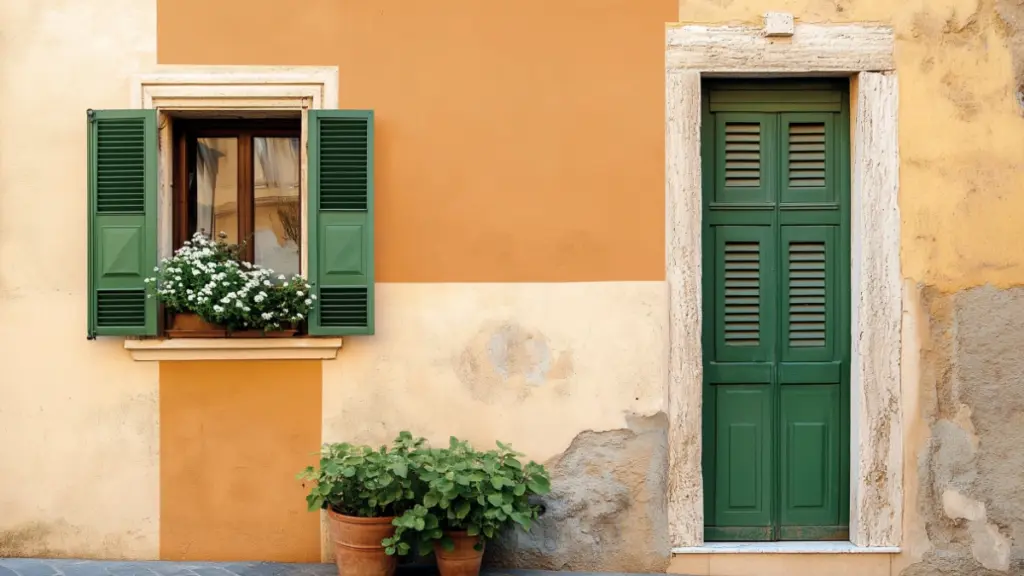
- Traditional hues seen in Roman streets and buildings
- How to recreate Rome’s warm tones at home
- Terracotta, ochre, cream, and deep green
Bullet Points:
- Use terracotta walls or tile accents to bring warmth.
- Combine creamy neutrals with brass for timeless appeal.
- Incorporate mossy greens through plants and textiles.
- Add burnt orange or deep reds in rugs and upholstery.
- Use natural light to highlight soft tones and textures.
Table: Rome-Inspired Color Palette
| Color | Use Case at Home |
|---|---|
| Terracotta | Feature wall, vases, or floor tiles |
| Warm Cream | Sofa covers, walls, linens |
| Olive Green | Cushions, plant pots, window frames |
| Deep Burgundy | Accent chairs, throws, art frames |
3. Aesthetic Streetscapes and Alleyways
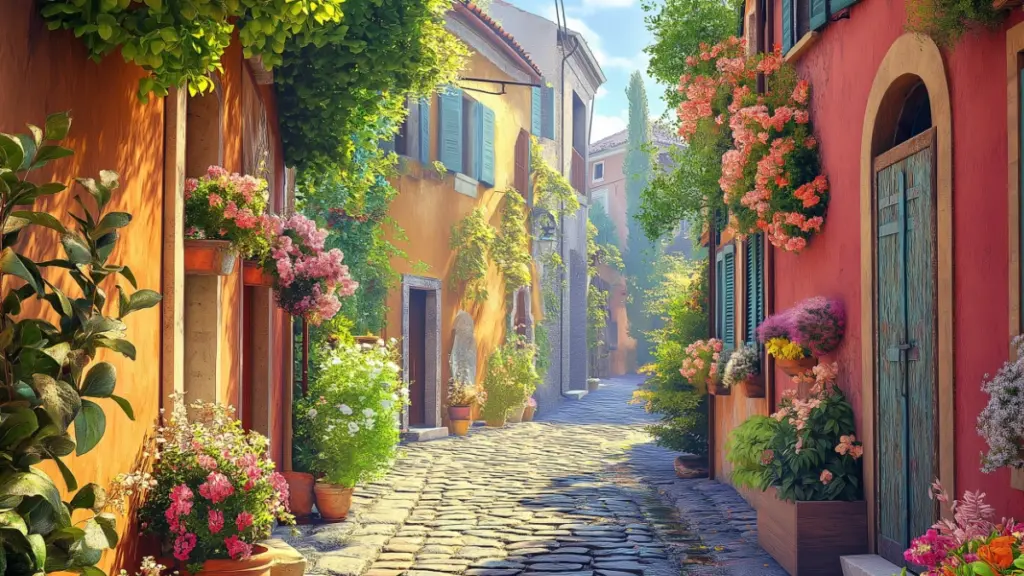
- Visual appeal of Roman alleyways and cobbled paths
- Street décor, textures, and layers of history
- Ideas to replicate this charm in small urban patios
Bullet Points:
- Mix stone, iron, and wood for an old-world feel.
- Hanging laundry, planters, and lamps add lived-in charm.
- Use mosaic tiles and textured walls for depth.
- Wrought iron railings and balconies inspire exterior styling.
- Vintage signs and lanterns create character indoors.
Table: Roman Street Aesthetic for Home Use
| Street Element | Home Adaptation |
|---|---|
| Cobblestones | Stone tile garden path |
| Iron Railings | Balcony or stairway detail |
| Hanging Plants | Window planters or balcony displays |
| Arched Doorways | Rounded headboards or entry arches |
4. Iconic Roman Cafés and Dining Culture
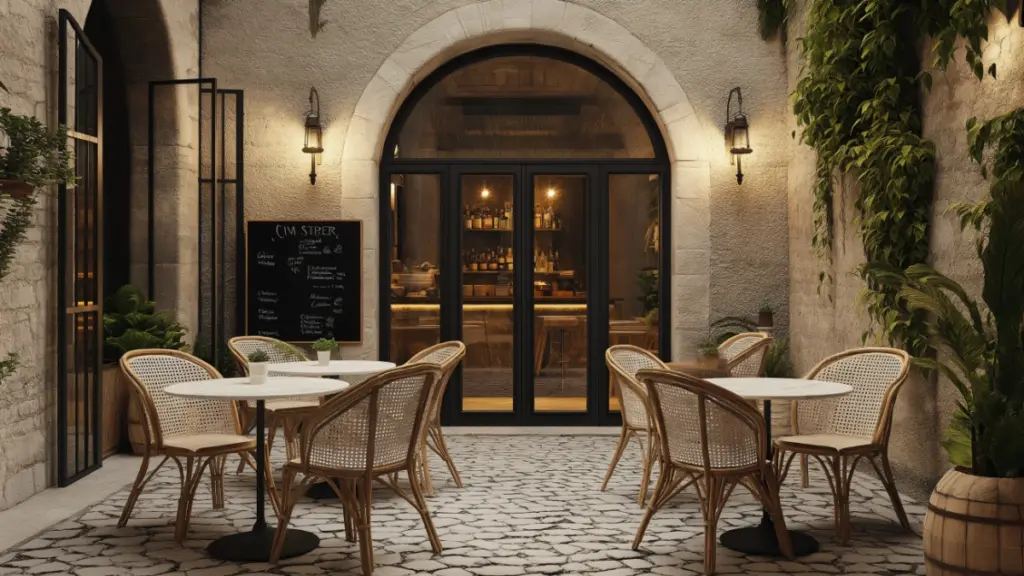
- Outdoor seating, ambient lighting, and vintage charm
- How to recreate a Roman café corner at home
- Materials and decor elements for a rustic feel
Bullet Points:
- Bistro chairs, round tables, and marble accents set the tone.
- Add candles or string lights for evening ambiance.
- Use espresso cups, ceramics, and simple table settings.
- Hang Roman café-style art prints for visual interest.
- Set a small space with warm lighting and vintage textures.
Table: Roman Café Decor Starter Guide
| Item | Design Influence |
|---|---|
| Wicker Bistro Chair | Classic outdoor charm |
| Marble Tabletop | Elegant, timeless surface |
| Ceramic Espresso Set | Adds authenticity and detail |
| String Lighting | Romantic evening aesthetic |
5. Fountains, Statues, and Outdoor Inspiration
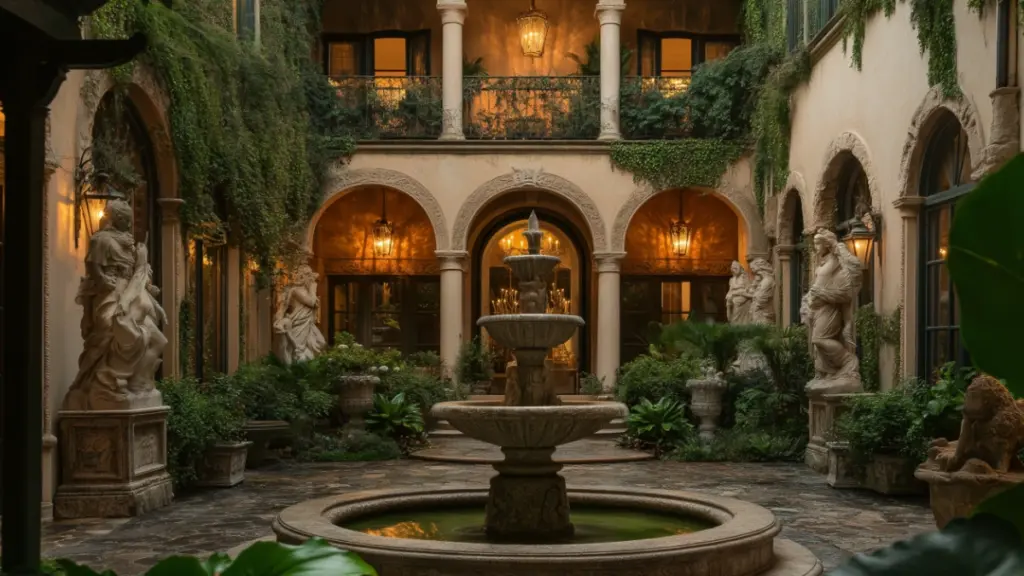
- Famous fountains like Trevi and their aesthetic impact
- Sculptural decor for patios, gardens, or entryways
- Water features as functional art in home design
Bullet Points:
- Use classical statue replicas in gardens for drama.
- Tabletop fountains evoke a sense of peace indoors.
- Incorporate stone planters or pedestals for height.
- Let water elements create ambient sound and calm.
- Draw inspiration from piazzas with central features.
Table: Roman Fountain-Inspired Decor Options
| Inspiration | At-Home Application |
|---|---|
| Trevi Fountain | Wall-mounted or tabletop water feature |
| Piazza Sculpture | Garden centerpiece or entry statement |
| Stone Basin | Rustic outdoor sink or planter |
6. Roman Markets and Everyday Aesthetic
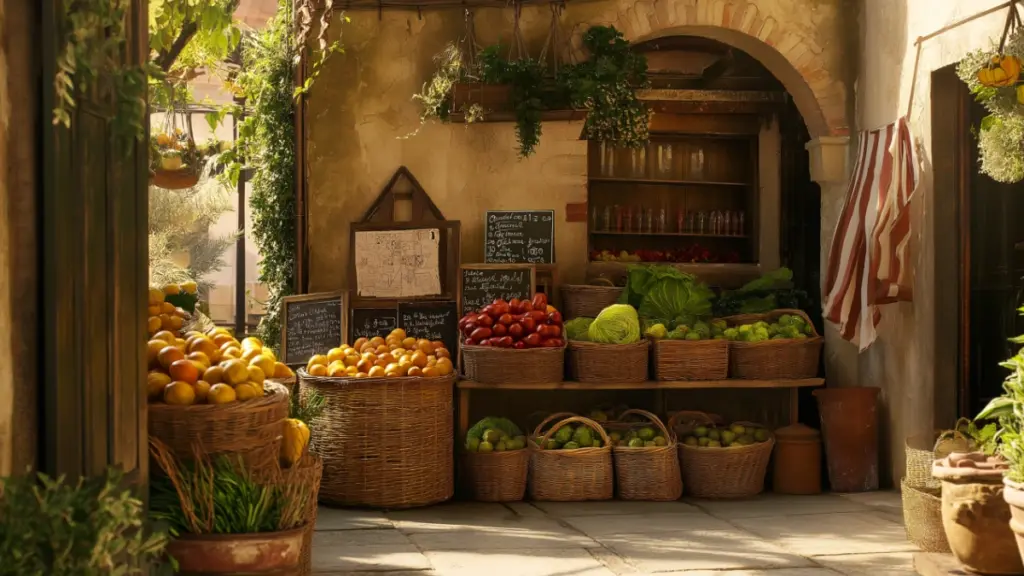
- Open-air markets and colorful, rustic lifestyle
- Textural richness in foods, baskets, linens, and signage
- Bringing that market feel into kitchens or dining areas
Bullet Points:
- Display fruits and vegetables in woven baskets.
- Use rustic wood trays or shelves for open storage.
- Hang copper pans, colanders, or vintage signage.
- Linen napkins and tablecloths add a tactile layer.
- Showcase herbs in clay pots or mounted planters.
Table: Roman Market Aesthetic for Kitchens
| Market Element | Kitchen/Dining Room Idea |
|---|---|
| Produce Baskets | Countertop storage |
| Hanging Utensils | Decorative and functional wall feature |
| Terracotta Pots | Fresh herbs on window sill |
| Linen Textiles | Napkins, table runners, café curtains |
Detailed Content Expansion:
2. Roman Color Palettes: Earthy and Elegant
Color plays a huge role in how we perceive spaces, and Rome’s palette is both grounded and romantic. Walking through Trastevere or Campo de’ Fiori, you’ll notice hues that echo centuries of life and culture—warm terracotta, aged cream, muted golds, and accents of sage and charcoal.
Bringing these tones into your home creates a sense of warmth and timelessness. A terracotta accent wall immediately infuses rustic charm, especially when paired with natural light and wood. Creamy whites, unlike stark modern whites, soften a room and complement vintage decor beautifully.
To modernize the palette, try layering these tones with matte black fixtures or brass hardware. Olive or moss green adds contrast through plants, painted trims, or upholstery. The key is texture: these colors look best on stone, linen, ceramic, and plastered walls.
Table: How to Use Rome’s Color Palette at Home
| Tone | Best Material Application |
|---|---|
| Terracotta | Wall paint, tiles, flower pots |
| Warm Cream | Sofa upholstery, throws, curtains |
| Olive Green | Wood furniture, wall trims, accent pillows |
| Gold/Bronze | Light fixtures, frames, drawer handles |
4. Iconic Roman Cafés and Dining Culture
Rome’s café culture is more than coffee—it’s about ambiance, people-watching, and design. Whether seated on cobblestones or tucked under an awning, Roman cafés are brimming with aesthetic charm.
Recreate this feeling in your kitchen nook, balcony, or sunroom. Start with a marble-topped bistro table and a set of wicker or iron chairs. Layer it with linen tablecloths and espresso cups. To complete the mood, string up soft lighting and add candles or vintage table lamps.
In terms of decor, small framed café art or vintage Italian ads add personality. A mini shelf with coffee gear—moka pot, espresso cups, sugar cubes—becomes a practical focal point.
If space allows, create a “Rome corner” with a tray for drinks, dried flowers, and art prints. Channeling this aesthetic doesn’t require a full renovation—just thoughtful touches that bring the warmth and pace of Italian café life to your home.
Table: Essentials for a Roman Café Vibe at Home
| Item | Purpose/Atmosphere |
|---|---|
| Bistro Table | Intimate café-style dining |
| Espresso Cups | Authentic feel and function |
| Linen Cloth | Textural charm and softness |
| Art Prints | Cultural and nostalgic references |
Conclusion
Rome’s visual beauty is timeless, layered, and effortlessly inspiring. From its golden architecture and romantic alleyways to the textures of market life and elegance of café culture, the Eternal City offers more than travel photos—it offers a blueprint for how to live with intention, warmth, and beauty. Whether you’re strolling through piazzas or recreating a slice of Rome at home, these aesthetic elements invite you to savor life the Italian way. Let Rome’s timeless charm spark ideas for your next trip or your next design refresh.

